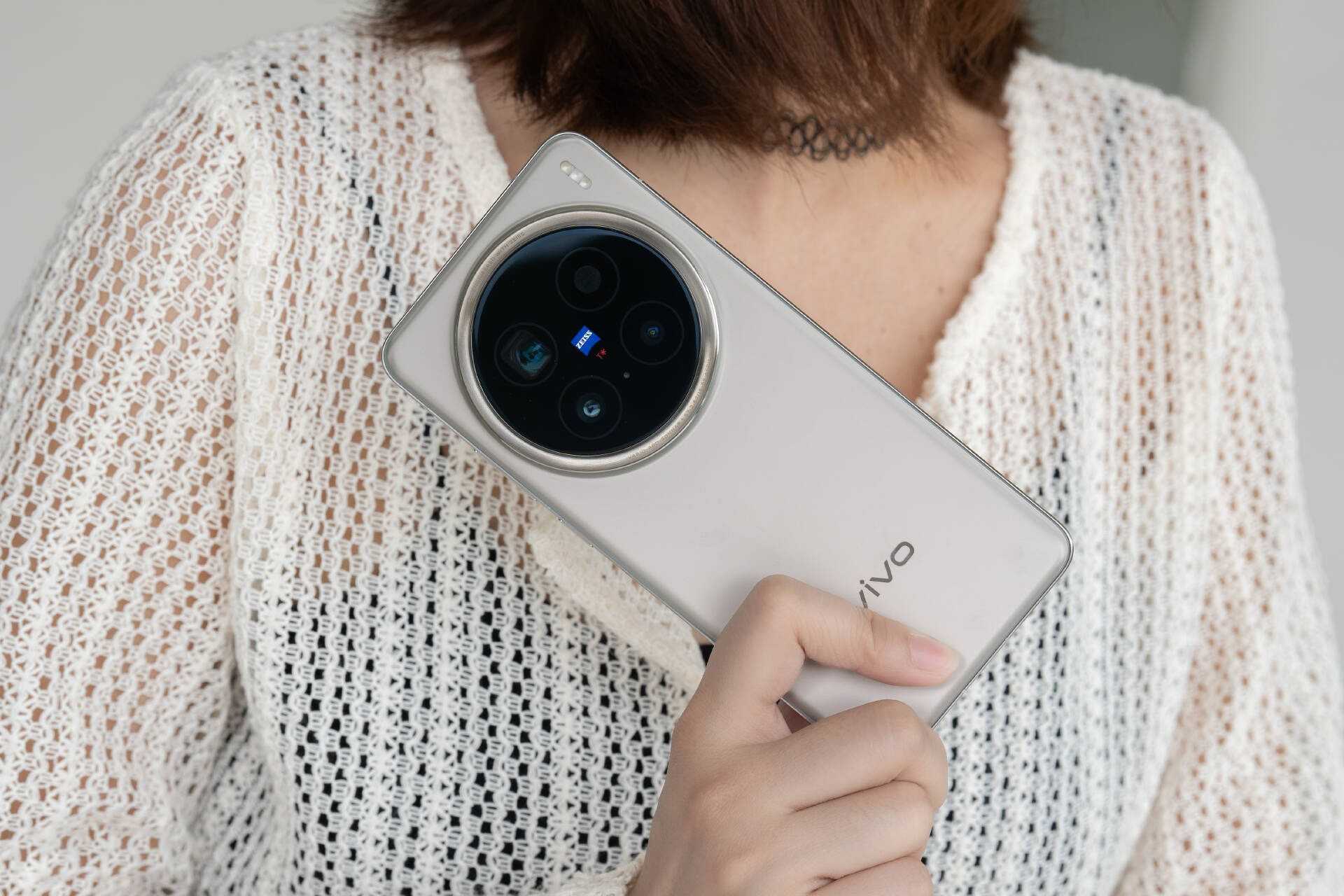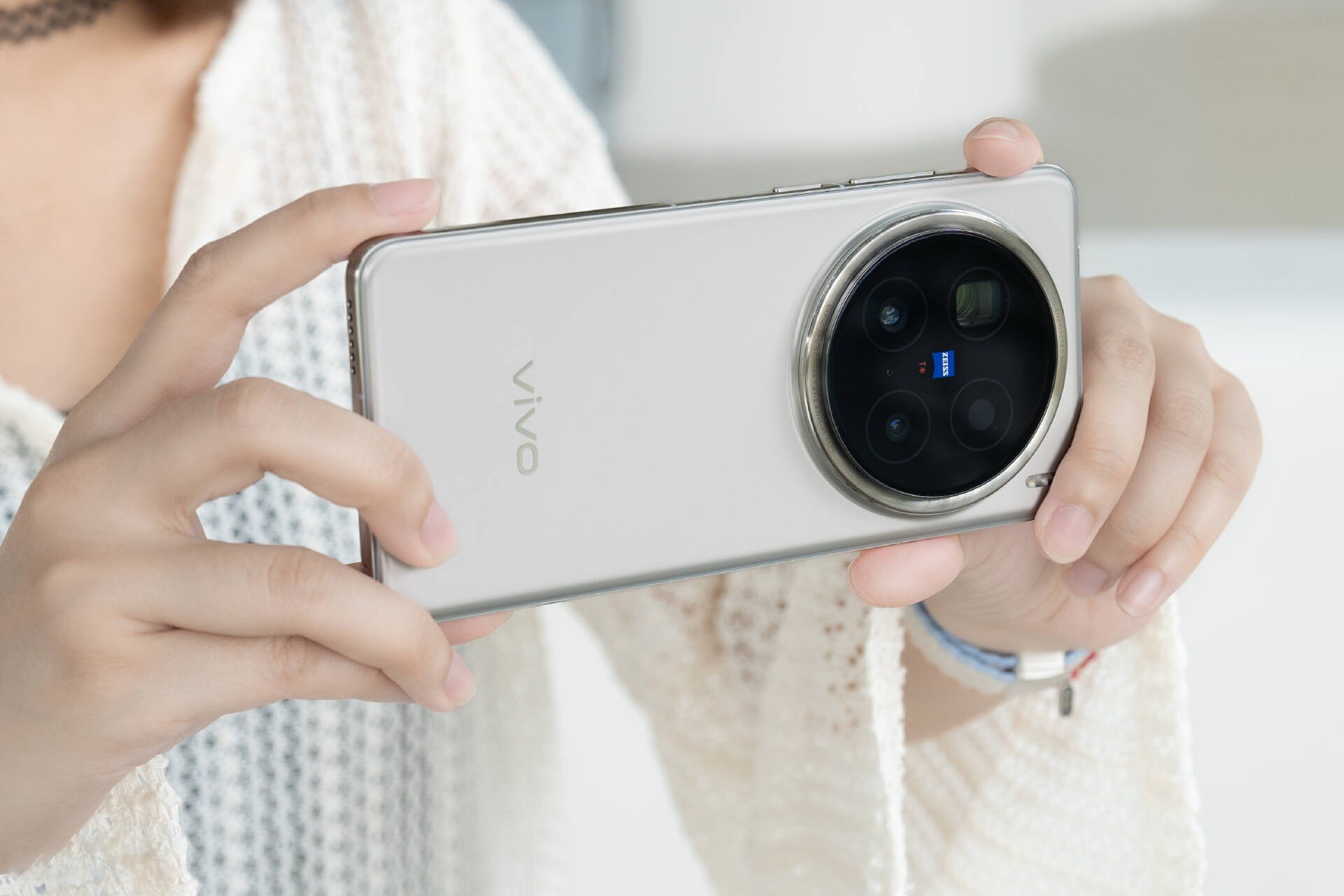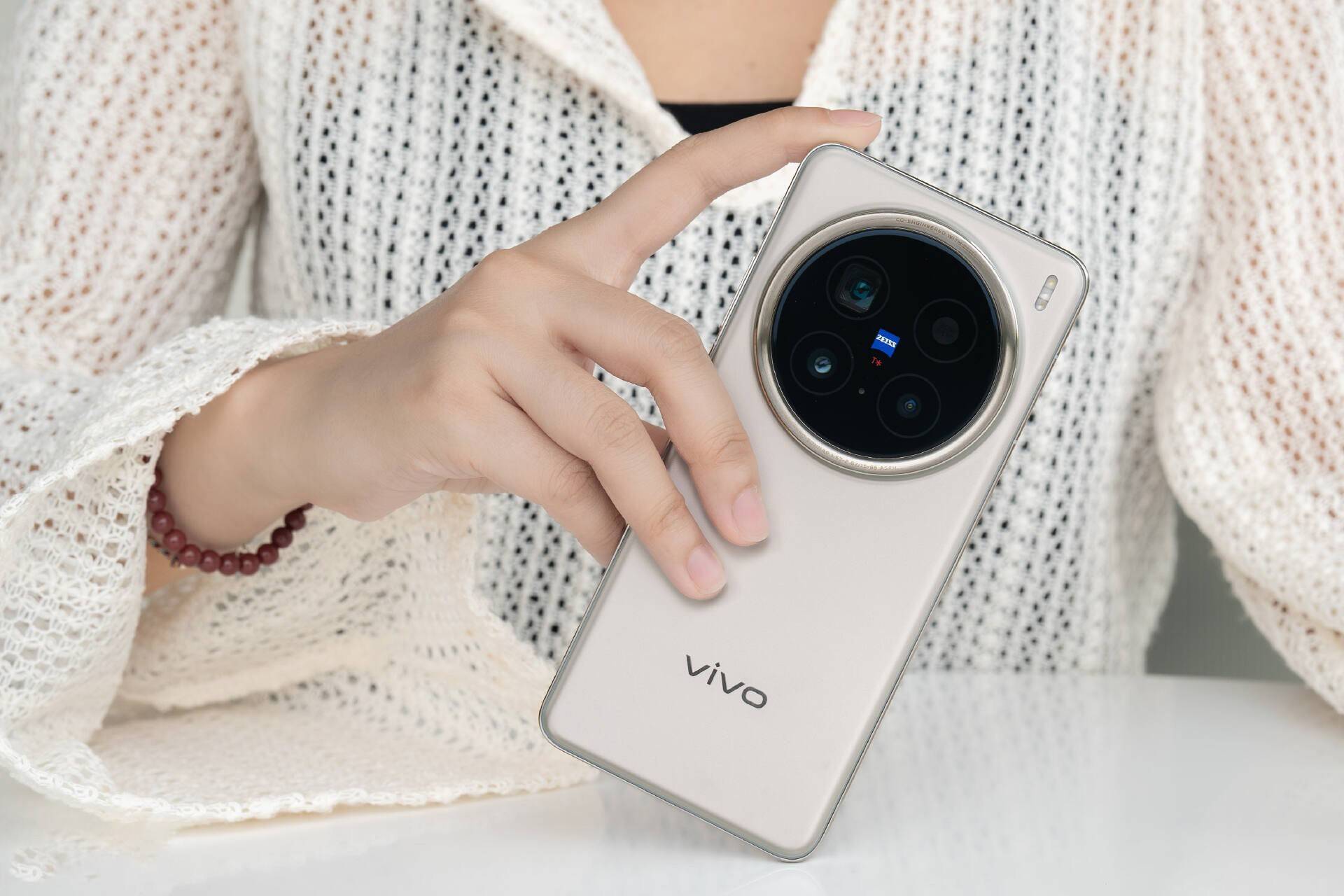It's hard to imagine that Vivo would put the X200 series at such an early point in time.
Compared to the past, we can see that the X200 series has some new ingenuity in the arrangement of models. The newly added Pro mini positioning is not only a new surprise choice for consumers, but also adds another tier to the traditional structure of “medium, large and extra large cups”, under which the relatively traditional “Pro” positioning will undoubtedly usher in more challenges. More challenges will undoubtedly come under this premise.
So, how does the vivo X200 Pro, which is in a hurry, cope with the challenge? We'll take a look today.
Classic styling with a few slots cut out
Overall, the Vivo X200 series still shares a lot of similarities with the X100 series, such as its centered, circular image module design, and a tiered transition similar to its predecessor's sun-ringed cloud steps, although the outer decorative ring has become concentric this time instead of its predecessor's off-center circle design.

Better news is that it also removed some of the slots of the previous generation of products, such as a part of the netizens do not like the “three lines of poetry”, is now removed, only in the decorative ring has a small circle of labeling.

The layout of the three cameras is aligned with the vivo X100 Ultra, three holes and a decorative circle arranged symmetrically, the edge of the cover glass also made a very detailed “water droplet” curved design, quite a sense of texture. Here is also a small comment, 200MP labeling is a little embarrassing, can only be said to be 200 million pixels ZEISS APO telephoto under the support of a small sacrifice, right?

We received the Titanium color, which is very metallic. This color scheme was also featured on the X100 Ultra, and the frosted finish complements the metallic texture, while the sheer metallic color of the center frame reinforces the look and feel, making it look very high-end for the Pro class.

On the front, the Vivo X200 series also finally uses a full isometric micro-quadrature design, a change from the double-curved screen that has been used for many generations, bringing some freshness. Correspondingly, the center frame of the Vivo X200 series has also been changed to a straight screen that is more in line with the quad-curved style, which makes it look a lot sharper in the hand.

Of course the hardware is top notch
The vivo X200 Pro also debuts MediaTek's latest Tenguet flagship platform this time around. Honestly speaking, this full large-core design of the Tengui 9400 did bring us a lot of surprises, but due to space constraints, we will not test its performance here, just put a screenshot of AnTuTu for your reference, the score is 2.91 million points. For more on actual performance, you can also refer to our vivo X200 standard edition review.

With the upgrade of the screen appearance form, vivo X200 Pro this time also improve the screen hardware, local peak brightness upgraded to 4500nits, the resolution is still 2800 x 1260, but also to achieve the “full brightness environment of the industry's lowest flicker”, use more eye protection. In addition to hardware upgrades, Vivo X200 series this time also for the color rendering of the update, the new full-link Zeiss natural color support, so it also has a higher theoretical upper limit.

As for other configurations, the Vivo X200 Pro has actually made a lot of efforts, such as achieving IP68+IP69 levels of dust and water resistance, as well as the durability brought by armored glass; it also upgraded its communication system, adopting the Universe Signal System 2.0, which has theoretically enhanced its signal performance, and it's also another model under Vivo's flag to support satellite communication; and the It also has a 6000mAh Blue Ocean battery, which we'll talk about later in the battery life section.
Truly “Pro” level imaging
While the vivo X200 Pro's imaging module has some minor cosmetic niggles, it's the power that's really worth paying attention to. In terms of hardware, the main camera uses the LYT-818 sensor, which was jointly defined by Blueprint and Sony. At 1/1.28, it's not exactly eye-catching, but it's built on a 22nm process, which means it's a big upgrade in terms of performance, such as being able to support higher HDR specifications and better power consumption.
It also boasts in the telephoto department, with a 200MP APO Super Telephoto from the previous vivo X100 Ultra's Zeiss, and finally an ultra-wide-angle lens with a JN1 sensor. In addition, it also uses the new Deep Absorption Blue Glass, and the Blueprint Image Chip V3+ support, etc., the whole set of hardware enhancement is quite significant.

Let's take a look at the actual sample photos. Overall, the Vivo X200 Pro's “Vivid” mode is quite full of color, and presents an atmosphere that is more in line with what the naked eye can see. Combined with the new custom sensor, the 23mm wide-angle main camera is still satisfactory.


Although the size does not give it an advantage, the LYT-818 used for the main camera does achieve an image quality similar to that of a one-inch sensor, and even when zoomed to 2×, the overall image quality is still impressive.


In the telephoto section, this 200 megapixel APO super telephoto still performs amazingly well, it uses a lens equivalent to 85mm, but in fact, we put it in the range of 3× to 10×, the image quality is very good, and even in a better light environment, continue to zoom digitally to an equivalent of 690mm (30×), the image is still usable, a kind of surprise from the Ultra model! There is a sense of surprise from the Ultra model.



This telephoto is also excellent in night scenes, even for neon signs with strong contrast between light and darkness, it can accurately retain the corresponding light information, retaining the sense of night without sacrificing the details, as if the dark text information hidden under the light bar, it also recorded, and its night scene image quality can be seen.


At the same time, this telephoto can also support telephoto macro shooting, not to mention the shooting of special detailed textures, let's say the most commonly used close-ups of food, its performance is enough to make people feel amazing.

Honestly, the ultra-wide-angle performance, which doesn't get as much attention, is relatively mediocre compared to the other two lenses, but the good news is that the colors are fairly consistent across all three cameras, giving this excellent imaging module enough to form a set of closed loops.


Let's talk more about some of the optimizations to the shooting experience on the vivo X200 series. The layout of the camera app has been significantly modified, with the landscape mode integrating some of the smaller functions that were relatively fragmented in the past, and even adding some convenient new features like the AR Planetarium; the video recording function has a new log mode and comes standard with a Lut monitor mode, and you can even go straight to editing with a single click next to the shutter button; and the other modes in the “More” section have been optimized. The other modes in “More” now look much more concise and easy to call.

Blue Ocean Battery
The vivo X200 Pro is equipped with the same Blue Ocean battery, with a capacity of 6000mAh, which is considered to be the top of the line among all imaging flagships, considering the level of comprehensive configuration. On the other hand, the MediaTek Tengui 9400 mobile platform is also deeply optimized in terms of power consumption, and theoretically with a full large-core design, it can rely on a more advanced core design to achieve a better performance in terms of energy consumption.

In our experience, the Vivo X200 Pro did not fail to meet expectations, and its power consumption performance was very good. In regular low-load scenarios, it did as well as it should with this battery capacity, and in relatively high scenarios such as League of Legends Handball at 120 fps, it consumed even less power than expected, which is quite impressive.

However, in terms of fast charging, Vivo X200 Pro this time seems a bit “cool”, it is on par with the previous generation of the oversized cup “Exterminator”, equipped with 90W fast charging, wireless charging is also up to 30W, although enough to use, but relatively speaking, not brilliant. It's not that impressive.
Summarize
In today's standard version and the super cup is constantly upgraded, the definition of the “Pro” version will always be in a dilemma. If you're stingy, it's hard to differentiate the product from the standard version; if you give too much, it will put too much pressure on the subsequent Ultra models, and it's hard to optimize the experience enough in a limited time frame to make it perfect.
What about the vivo X200 Pro?

In my opinion, the Vivo X200 Pro is of the “no room for Ultra” school of thought. It still brings a pretty impressive combination of top-notch performance, great battery life, a leading-edge screen, and a decent-feeling body, and its imaging prowess is even comparable to that of the Ultra models. In a jokey way, vivo could even just call it the X200 Ultra if it wanted to.
More than just the ultimate hardware, the software experience on the Vivo X200 Pro is also very sophisticated. The fully optimized new OriginOS 5 system blends right in with the many new features, and there's a freshness to it that's free of fluff, which is pretty rare in these days of flagship surges.

With two and a half months to go before 2025, the Vivo X200 Pro is both the earliest and the most ambitious flagship phone yet. Can it fully utilize its “first-mover advantage” and become the representative of the new generation of domestic flagships? We'll see.








